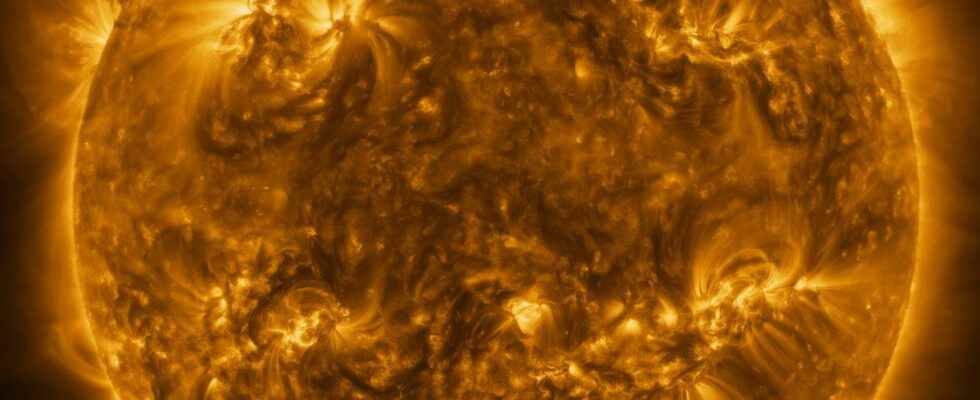You will also be interested
[EN VIDÉO] Discover extraordinary images of the sun thanks to Solar Orbiter The first images of ESA’s Solar Orbiter have just been released! They reveal the Sun in all its splendour, in high definition.
Almost two years ago now and some four months after its launch on June 15, 2020, Solar Orbiter made his very first visit ” near “ of our Sun. The probe (ESA, Nasa) then passed 77 million kilometers from our star. About half the Earth-Sun distance. A great opportunity especially for researchers to test the ten instruments on board the machine. But the goal was not yet achieved.
Since then, Solar Orbiter has benefited from several operations ofgravity assistrelying on our Earth and Venusto finally, this Saturday, March 26, 2022, approach our star to less than a third of the Earth-Sun distance. Or about 48 million kilometers only of its bubbling surface. The probe thus penetrated the solar corona. And its ten instruments all worked perfectly, collecting data and images of our Sun like the astronomers had never seen him before.
Over the next few years, Solar Orbiter will make several passes close to our star. Certainly sending back valuable information to researchers, especially since the probe will also be oriented more and more towards poles of our Sun. Regions that have only rarely been observed.
The Sun in Extraordinary Resolution
While waiting for these unpublished photos to be published and for them to reveal a little more the secrets of our star, the researchers working on the Solar Orbiter mission are already sharing an image of a resolution breathtaking. Some 83 million pixel. A resolution ten times better than that of our 4K screens. Quite simply the best image ever obtained of the corona and the complete disc of our Sun.
The image was taken on March 7. Using theExtreme Ultraviolet Image (EUI), when Solar Orbiter was about halfway the Earth-Sun distance. The image or rather, the images. Because the spatial resolution of EUI is such that at 75 million kilometers, it takes 25 images to cover the entire surface of our Sun. At the rate of about ten minutes for each shot, it will have taken the probe no less than four hours to immortalize our star in this way.
As it is in the extreme ultraviolet range that EUI observes our Sun, at a wave length of 17 nanometersastronomers will be able to draw information from high atmosphere of our star. An environment in which temperature rises to about one million degrees Celsius.
Another set of stunning images
The instrument called Spectral Imaging of the Coronal Environment (SPICE) also returned exceptional images. The first of its kind in 50 years. And in fact, by far the best.
The instrument is designed to drill through the layers of the solar atmosphere, from the corona inwards, to the chromosphere – by analyzing the wavelengths of the light extreme ultraviolet radiation from different atoms. I’hydrogen gas at a temperature of around 10,000°C, here, in purple, carbon at around 32,000°C, in blue, oxygen at around 320,000°C, in green, and the neon at no less than 630,000°C, in yellow. What to allow the physicists to trace the solar flares observed in the crown down to the lower layers of theatmosphere of the Sun. And perhaps to finally understand why the temperature increases in a completely counter-intuitive way as we move away, in the solar atmosphere, from the surface of our star.
Support your independent scientific media: discover our subscription formulas!
4 good reasons to subscribe to Futura on Patreon:
- A site without any advertising from 3.29 euro per month.
- It is without commitment.
- Access to priority content, in preview, just for you.
- You support our business in the best possible way. A real motivation for us!
Interested in what you just read?
